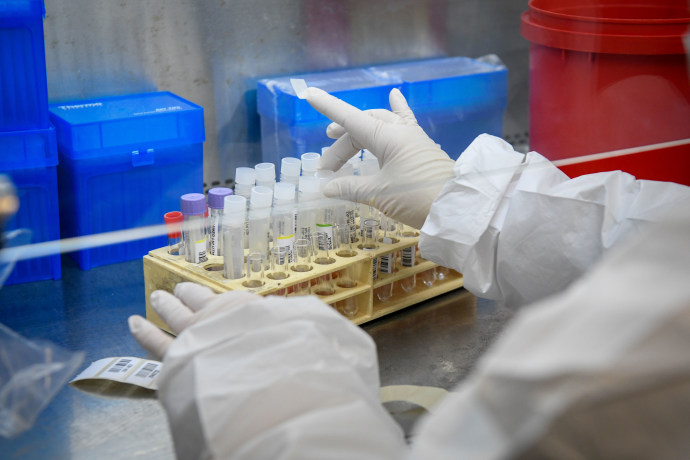A man was sick with COVID-19 for 411 days straight, but even after all this time battling with the disease, British scientists were finally able to cure him, as detailed in a new study.
The findings of this study, published in the peer-reviewed academic journal Clinical Infectious Diseases, shed light on the methodology used to finally help this COVID-19 patient be free after over a year of the disease.
The scientists described in the study how it was that this man could have the virus for so long.
How was a man infected with COVID-19 for over 400 days?
The patient in question was a 59-year-old who had undergone a kidney transplant. This caused him to have a lower immune system and develop what is known as persistent COVID infection. This condition is rare and is not the same as long COVID or repeated cases. Rather, it is when COVID-19 simply doesn't go away for months or even years all while symptoms persist.

The patient in this case contracted COVID-19 in December 2020 and continued to test positive for the virus until January 2022.
Researchers were stunned and began investigating how this happened for so long. As they did, they discovered that indeed, he still had COVID-19, but it was the B.1 variant. This earlier variant is all but gone now, with newer variants now taking center stage in the pandemic, like Omicron.
"The very new variants that are increasing in prevalence now are resistant to all the antibodies available in the UK, the EU and now even the US," Luke Snell, a physician specializing in infectious diseases at Guy's and St Thomas' NHS Foundation Trust, said.
"The very new variants that are increasing in prevalence now are resistant to all the antibodies available in the UK, the EU and now even the US."
Luke Snell
The researchers used several such treatments to try to save a seriously ill 59-year-old man in August this year who had been infected since 2020. However, none worked. "We really thought he was going to die," Snell said.
How did researchers manage to treat the man?
But the fact that he only had B.1 was actually how he was cured because treatments used earlier in the pandemic made obsolete by the later variants would still be effective. Using this new information, researchers managed to treat the man properly.
Because he had this early variant, the researchers crushed up two antiviral treatments not previously used together, the casirivimab and imdevimab monoclonal antibodies from Regeneron, and administered them to the unconscious patient via a nasal tube, according to a non-peer-reviewed preprint study on the website ResearchSquare.
"Miraculously he cleared and perhaps this is now the avenue for how we treat these very difficult persistent infections," Snell said, emphasizing that this treatment may not translate for normal COVID cases.
